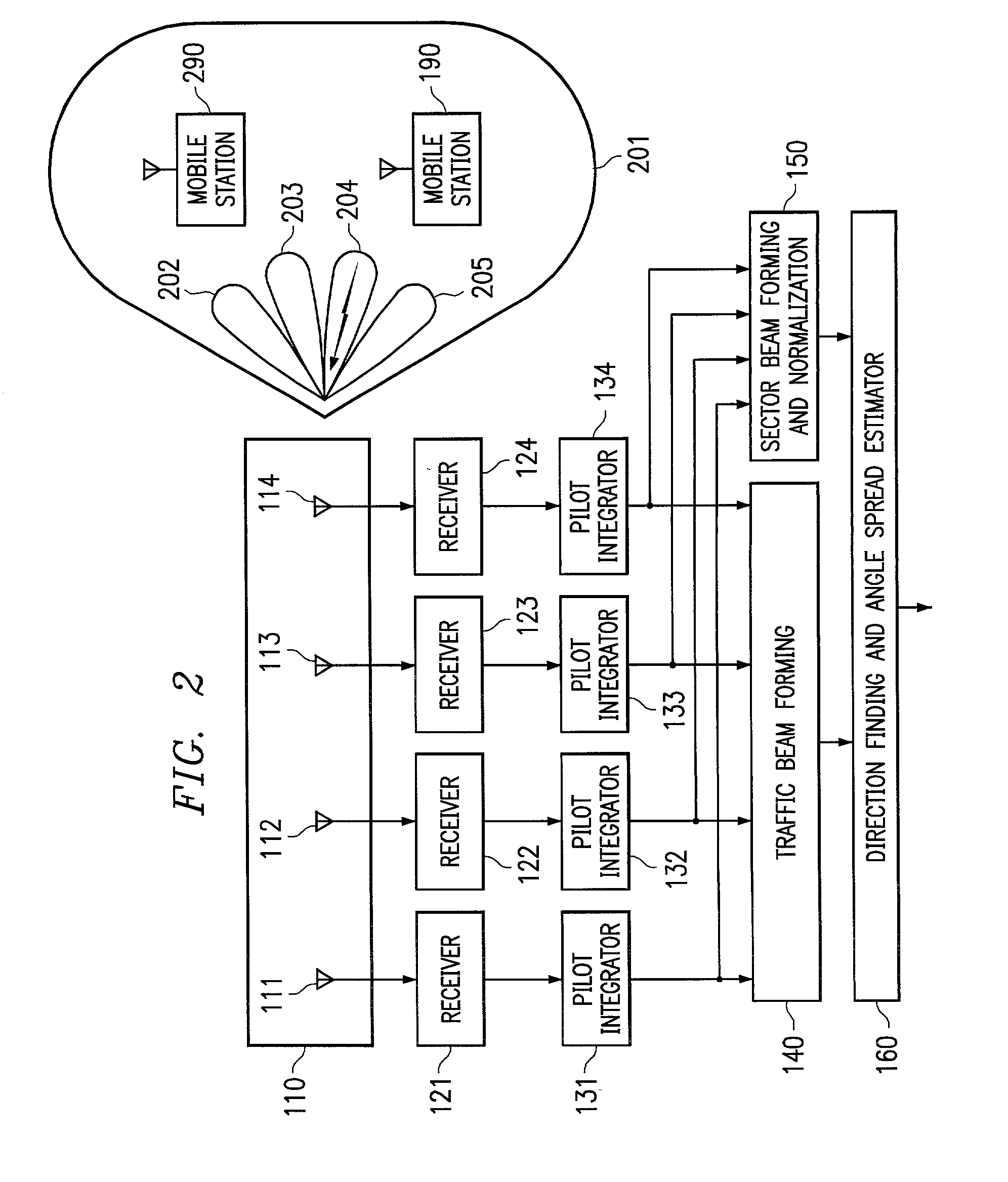System and method for providing phase matching with optimized beam widths
a beam width and beam technology, applied in the field of wireless communication, can solve the problems of phase mismatch at one or more subscriber units, the use of narrow beams for reducing radiated and/or accepted energy can be problematic with respect to pilot signals, and the signal quality may be decreased, so as to increase the communication system capacity and minimize interference energy
- Summary
- Abstract
- Description
- Claims
- Application Information
AI Technical Summary
Benefits of technology
Problems solved by technology
Method used
Image
Examples
Embodiment Construction
[0027] In order to describe the concepts of the present invention reference shall be made herein to a preferred embodiment communication system providing cellular or PCS type communications according to a code division multiple access (CDMA) and frequency division duplexing (FDD) protocol, such as used in CDMA-2000 (IS-2000) radio configuration three (RC3). However, it should be appreciated that the concepts of the present invention are applicable to any number of communication systems, including those using frequency division multiple access (FDMA), time division multiple access (TDMA), time division duplexing (TDD). Moreover, it should be appreciated that preferred embodiments of the present invention operate to provide space division multiple access (SDMA) for increased communication capacity where typical system configurations, such as the aforementioned CDMA-2000 systems, do not provide multiple access based upon spatial characteristics, such as within a sector.
[0028] Directing...
PUM
 Login to View More
Login to View More Abstract
Description
Claims
Application Information
 Login to View More
Login to View More - R&D
- Intellectual Property
- Life Sciences
- Materials
- Tech Scout
- Unparalleled Data Quality
- Higher Quality Content
- 60% Fewer Hallucinations
Browse by: Latest US Patents, China's latest patents, Technical Efficacy Thesaurus, Application Domain, Technology Topic, Popular Technical Reports.
© 2025 PatSnap. All rights reserved.Legal|Privacy policy|Modern Slavery Act Transparency Statement|Sitemap|About US| Contact US: help@patsnap.com



